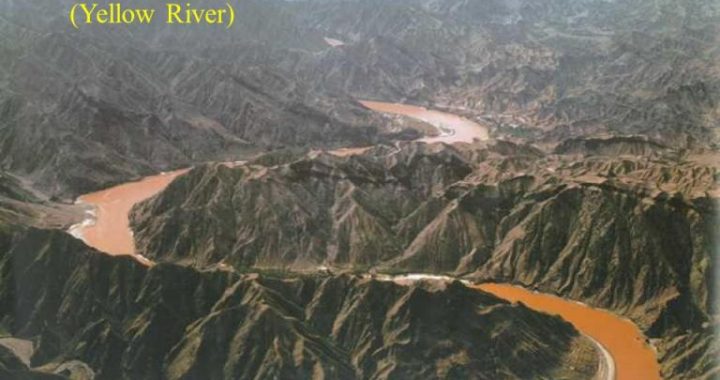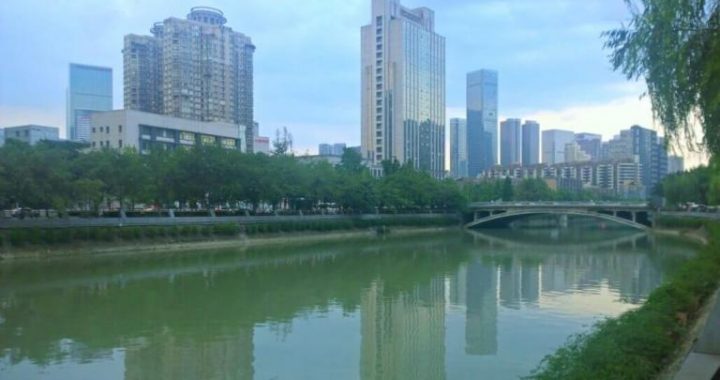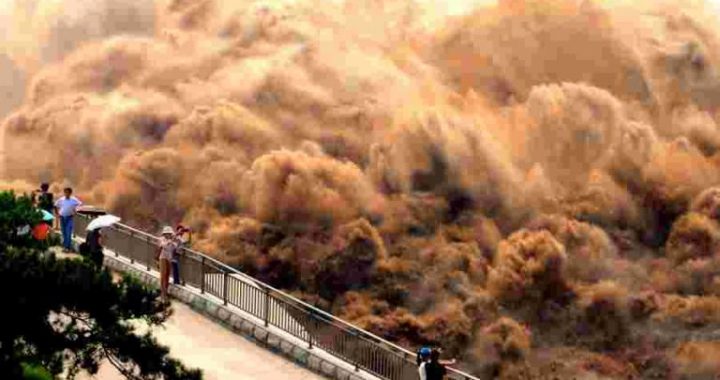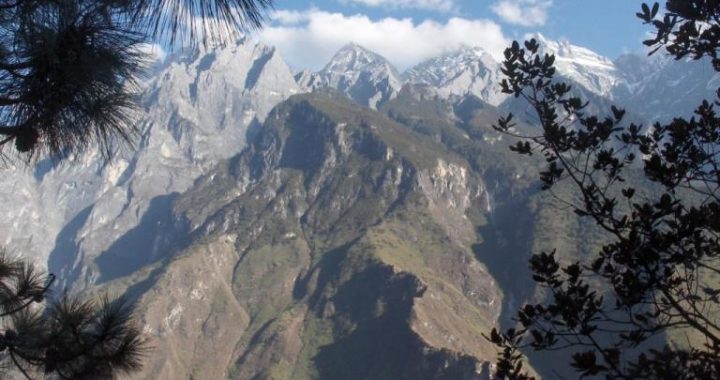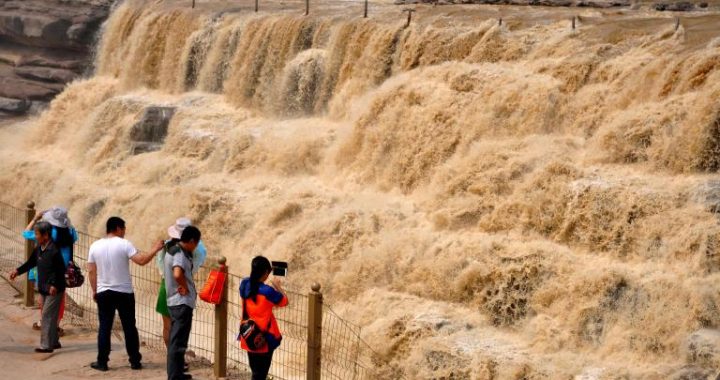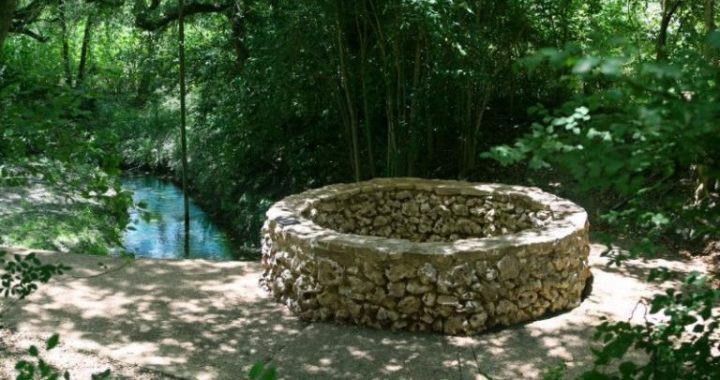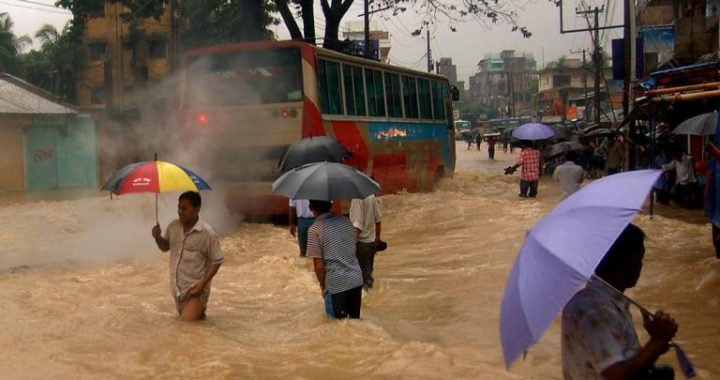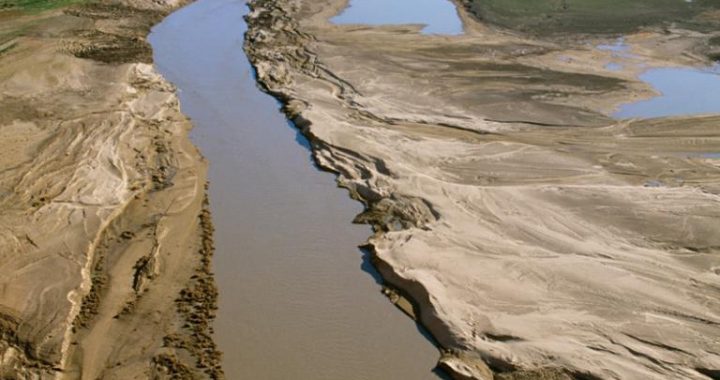Water Conservancy Projects in China
9 min readIn order to harness the floods and develop the waterpower resources of the Yellow River, people build various water conservancy projects that can control and adjust the currents in the Yellow River. By building several water conservancy projects together, it makes a comprehensive key water conservancy project. Large and comprehensive water conservancy projects play an important role in dealing with floods of the Yellow River and developing and exploiting the YellowRiver resources.
The Chinese government began to build large water conservancy work on the Yellow River long before in order to control the floods and exploit the waterpower resources. After years of efforts,a series of large key water conservancy projects has been built in the Yellow River Basin, from the upper to the lower reaches: Longyang Gorge, Liujia Gorge, Yanguo Gorge, Bapan Gorge, Qingtong Gorge, Sanshenggong, Wanjiazhai, Tianqiao, Sanmen Gorge and Xiaolangdi Water Conservancy Projects. Their construction makes the most harmful floods and silts problem of the Yellow River under control or be alleviated to a large extent; besides, water conservancy projects have the functions of controlling the water volume of theriver, storing water in high water and discharging in low water, which makes the irrigation function of the Yellow River work better, and this is of especial significance for the dry areas such as Inner Mongolia Autonomous Region and Ningxia Hui Autonomous Region. What’s more, the construction of the key water conservancy projects can also transform the waterpower resources that are stored in the river t another clean energy-electricity power.
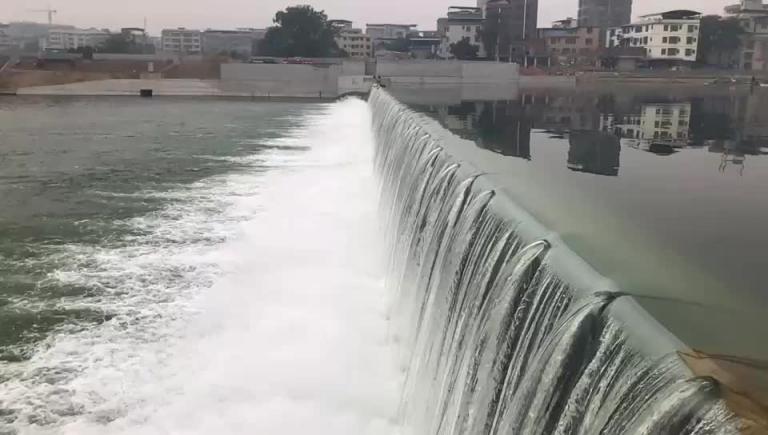
1) Longyang Gorge Comprehensive Water Conservancy Project Longyang Gorge is a famous gorge in the upper reaches of the Yellow River, located in Gonghe County and Guide County in Hainan Tibetan Autonomous Prefecture of Qinghai Province. In this section of 33.6 kilometers, the water surface has a sharp drop of 235 meters in elevation, and the cliffs along the river rise over 150 meters above the water. In addition, the river is only 30 meters wide. Therefore, the water rushes down magnificently and spectacularly, like thousands of horses. Abundantwaterpower resources and good topographical conditions make Longyang Gorge an excellent place for building largescale water conservancy project. After over 10 years of nonstop efforts, Longyang Gorge Comprehensive Water Conservancy Project was completed in 1989. The dam of 178 meters tall is sited 1.5 kilometers from the entrance of the gorge in the lower reaches, and this kind of dam height is also rare in the world. The dam is high, accordingly its storage capacity is certainly very large, which is of 24.7 billion cubic meters, making it the reservoir with the largest storage capacity on the YellowRiver.
The water volume from the upper reaches of the Yellow River is not very much, and it needs many years for the reservoir to fill with water. However, once it is full it can be of great function and bring much benefit. When the area in the lower reaches is short of water, the reservoir can provide clean water continuously for the lower reaches; on the contrary, when there is too much water in the lower reaches, it can close its sluice-gate to alleviate the flood pressure. And this is the adjustment function of reservoir. The larger the storage capacity of the reservoir, the stronger its adjustment ability. In addition to the irrigation, water supply and flood prevention functions, Longyang Gorge Water Conservancy Project also has large electricity-generating ability. In its power plant there installed four huge turbogenerators, each of which has a capacity of 300,000 kilowatts. With a total installed capacity of 1.28 million kilowatts, the station can generate 5.98 billion kilowatt-hours of electricity every year, which provides infinite power for the development of the northwest area of China.
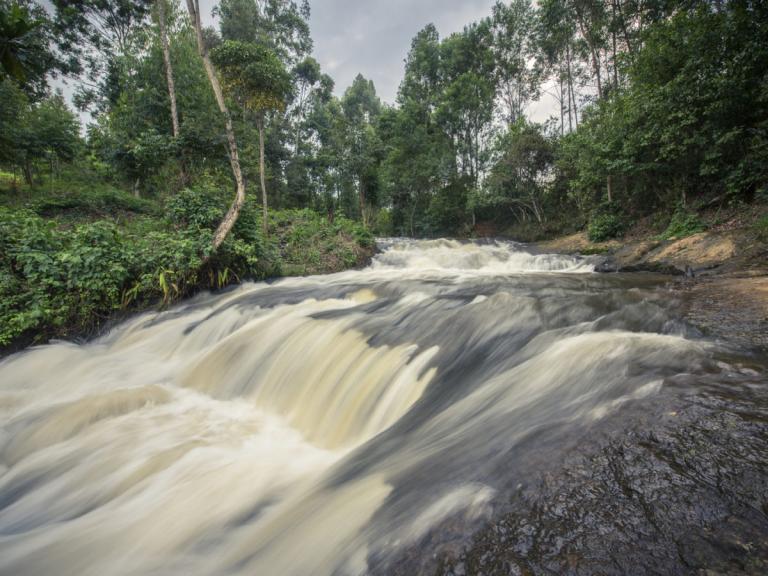
2) Liujia Gorge Hydroelectric Power Plant
Liujia Gorge Hydroelectric Power Plant is the first large hydroelectric power plant of millions of kilo watts-hours that was reconnoitered and designed by the Chinese people, and its equipments were also made, installed, tested and run by Chinese people. It is located among the high mountains and absorbing the waters from the Yellow River, Taohe River and Daxia River, it forms the largest artificial lake on the Northwest Plateau in China-Liujia Gorge reservoir.
Design of Liujia Gorge Hydroelectric Power Plant was started in March 1956, and construction started on September 27,1958. The river was successfully blocked on January 1,1960. And on May lst that year, the major dam began to mould concrete. InDecember 1974, the five units of gigantic water turbogenerators were all put into operation, and the whole project cost 638 billion. This hydroelectric power plant used to be the largest in Asia at that time for its highest dam-147 meters, its largest single dynamo capacity and total installed capacity, its highest transmission voltage and its longest transmission line, and it has its unique position in the Chinese hydroelectric power plant history.
Liujia Gorge Hydroelectric Power Plant is composed of three parts, the water-warding construction, flood-discharg ing construction and water-introducing construction. Water-warding construction is composed of the riverbed concrete weight dam,i.e. the main dam, concrete subsidiary dams on the right and left banks, and loess subsidiardam on the right bank. The top of the dam has a total length of 840 meters, with an elevation of 1,739 meters above sea. The main dam is a whole concrete weight dam, with a maximum height of 147 meters, and its 204 meters’ long. The top of the main dam is 16 meters wide and its bottom 117.5 meters wide. The flood and sediment discharging construction includes spillway, flood-discharging holes and outlets, and also sediment-flushing holes. At the normal high water level, the four flood discharging and sediment flushing constructions have a discharging capacity of 7,533 m3/s; at the water level of 173.8 meters, its flood discharging capacity is 8,092 m3/s. When it is discharging flood on a large scale, the water rushes down from thespillway which is of 870-meter long and 100-meter high above the riverbed, and thetorrents are just like arrow shoot from a bow, which turn and spring at the end of the riverbed, just like a dragon ascending into the sky and spurting out clouds and mists; it also like thousands of horses galloping down whose thunderous sound echoes continuously; above the water there appear beautiful rainbows in the sun, which fascinate and marvel the visitors a lot.
Liujia Gorge Hydroelectric Power Plant is mainly used to generating electricity, and it also has the comprehensive functions of flood prevention, irrigation, ice run prevention, aquatics breeding, transportation, tourism, in dustry and city watersupply etc. As the major power plant in the Northwest Power Grid, Liujia Gorge Hydroelectric Power Plant contributes a lot in peaking and frequency modulation, voltage regulation and reserved power for accidents etc. for the power grid. It greatly promotes the industrial and agricultural production in the northwest area, especially providing strong power for the high energy-consuming industries such asnonferrous metal refining, ferroalloy, calcium carbide and chemical industry and thedevelopment of high-head electric-lifting irrigation project in Gansu Province and Qinghai Province.
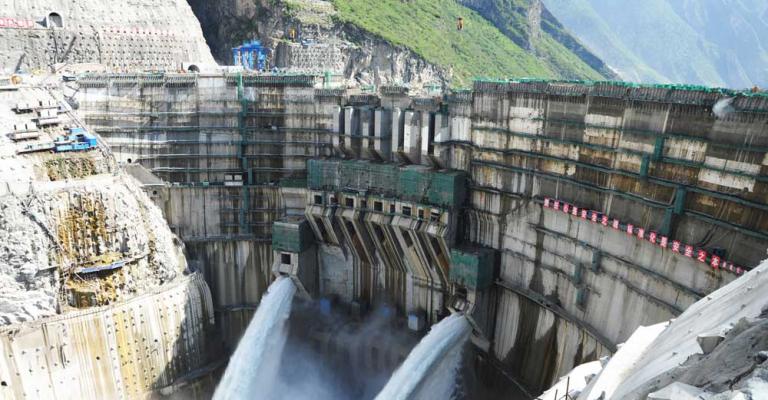
3) Sanmen Gorge Water Conservancy Project
On the Yellow River of the border area of Shanxian County in Henan Province and Pinglu County in Shanxi Province, there is the famous Sanmen Gorge Water Conservancy Project. The position of Sanmen Gorge is in the lower part of the middle reaches of the Yellow River, about 200 kilometers away from the lower reaches of the Yellow River. The basin area above it is 688,399 square kilometers, accounting for 91.5% of the total drainage area of the Yellow River, and it controls 89% of the inflow of the Yellow River and 89% of the sediment volume, therefore it is quite justifiable to say that Sanmen Gorge is the throat of the Yellow River. With strategic position and good geographical and topographical conditions,a dam built here can control effectively and easily the whole Yellow River Basin. With these unsubstitutable advantages, building damhere can bring very large benefits. Therefore, in the 1950s, the Chinese government chose to build the first dam on the Yellow River in Sanmen Gorge.
In September 1960, the whole project was completed. The scale of the project then was: the damwas 106 meters high and 713 meters long, and the storage capacitywas of 5.4 billion cubic meters, and there installed 7 turbogenerators with totalcapacity of 400,000 kilowatts. In order to build the reservoir,64,000 hectares of farmlands were submerged, and the number of resettled people reached 320,000.
Because the Sanmen Gorge reservoir controls the inflow water from the upper reachesof the Yellow River, it contributes a lot to alleviating the flood prevention burden in the lower reaches after its completion. At the same time, large amount of sediments from the Loess Plateau in the middle reaches of the Yellow River is also held up in the reservoir, making the water in the lower reaches turn clean, and meanwhile the elevated riverbed resulted from silting in the lower reaches can also be scoured.
Soon after the completion of Sanmen Gorge Water Conservancy Project, there appeared the serious problem of silting in the Sanmen Gorge reservoir. Till October 1964, there accumulated 3.271 billion cubic meters of sediment in over four years.
If it was silted at this rate, then the whole reservoir would be silted up. What was worse, silting made the water level in the upper reaches and the groundwater level along the river rise, and also brought the danger of soil salinization-alkalization to the nearby Guanzhong Plain in Shaanxi Province.
In order to prolong the service time of the reservoir, the Chinese government rebuilt the Sanmen Gorge Water Conservancy Project twice, in 1965 and 1969 respectively, enabling the water and sediment from the upper reaches to pass Sanmen Gorge reservoir smoothly and to discharge to the lower reaches. The running way of this project also turned to “storing clean water and discharging sediments”from the original”storing water and holding up sediments”.
“Storing clean water”is that when the water flowing from the upper reaches of the Yellow River is comparatively clean,i.e. the sediments the water carries is notmuch, Sanmen Gorge dam closes its sluice-gate and stores the water in the reservoir for preparation. Since the water doesn’t carry much sediments, it won’t cause large scale silting in the reservoir;”discharging sediments”is that when the water flowing from the upper reaches carries comparatively large amount of sediments, then the sluice-gate of the dam will be open and let the water pass the dam, hence avoiding the silting of sediments in the reservoir, and the service time of the reservoir can be prolonged.
At present, most time in the flood season the reser voir will open its sluice gate to discharge water, and it only closes part of or all the sluice-gates when there is specially large flood (flux exceeds 22,000 m3/s) in the lower reaches under Sanmen Gorge Water Conservancy Project, which won’t last long-once the flood withdraws, the gates will be open again. After this kind of exploration, practiceand improvement, Sanmen Gorge Water Conservancy Project keeps running properly, functioning well in the management of the YellowRiver.
4) Xiaolangdi Water Conservancy Project
About 130 kilometers down Sanmen Gorge Water Conservancy Project, at the place Yellow River is going to enter the plains on the lower reaches from the mountainous area, there is a small village called Xiaolangdi. This was originally a very common sma1l village; however, with the completion of Xiaolangdi Water Conservancy Project, this place began to be widely known.
Xiaolangdi Water Conservancy Project is the only control project that can have a huge reservoir in the section lower than Sanmen Gorge on the mainstream of the YellowRiver. It can not only well control the floods in the Yellow River, but also use its sediment capacity to control sediment accretion, reducing the speed of riverbed elevation in the lower reaches. Its scale is not second to the neighboring Sanmen Gorge Hydroelectric Power Plant at all. In April 1991, the project was approved at the Fourth Session of the Seventh National People’s Congress to be constructed during the “Eighth Five-Year Plan”period.
The early period of construction of the Xiaolangdi project started in September 1991. In September 1994, the construction of the main part of the project started. In October 1997, the river was successfully blocked. The first generating unit was put into operation in January 2000, and at the end of 2001, the whole project was completed. The project cost 11 years, moved 94,780,000 cubic meters of earth and stone, built with 3,480,000 cubic meters of concrete and 30,000 tons of steel structure. The project also achieved good records in completing ahead of schedule, investment economizing and high quality, which won wide praise fromhome and abroad.
The dam of Xiaolangdi Water Conservancy Project is 281 meters high, and the highest water level of the reservoir is 275 meters. The reservoir has a storage capacity of 12.65 billion cubic meters,a sediment capacity of 7.55 billion cubic meters, and a long-termeffective capacity of 5.1 billion cubic meters. In the flood season the limiting water level for flood control is 254 meters, and the limiting water level of ice run control is 266 meters. The maximum capacity of flood discharge is 17,000m3/s, and the normal discharge capacity is a little over 8,000 m3/s.
The Xiaolangdi reservoir would submerge 277.8 spuare kilometers of land in its normal water level, and the construction area was of 23.33 square kilometers. Eight counties (cities) and 33 villages and towns in Henan Province and Shanxi Province was submerged; the 8 counties are Jiyuan, Mengjin, Xin’ an, Mianchi, Shanxian, Pinglu, Xiaxian and Yuanqu. And 200,000 people were resettled.
